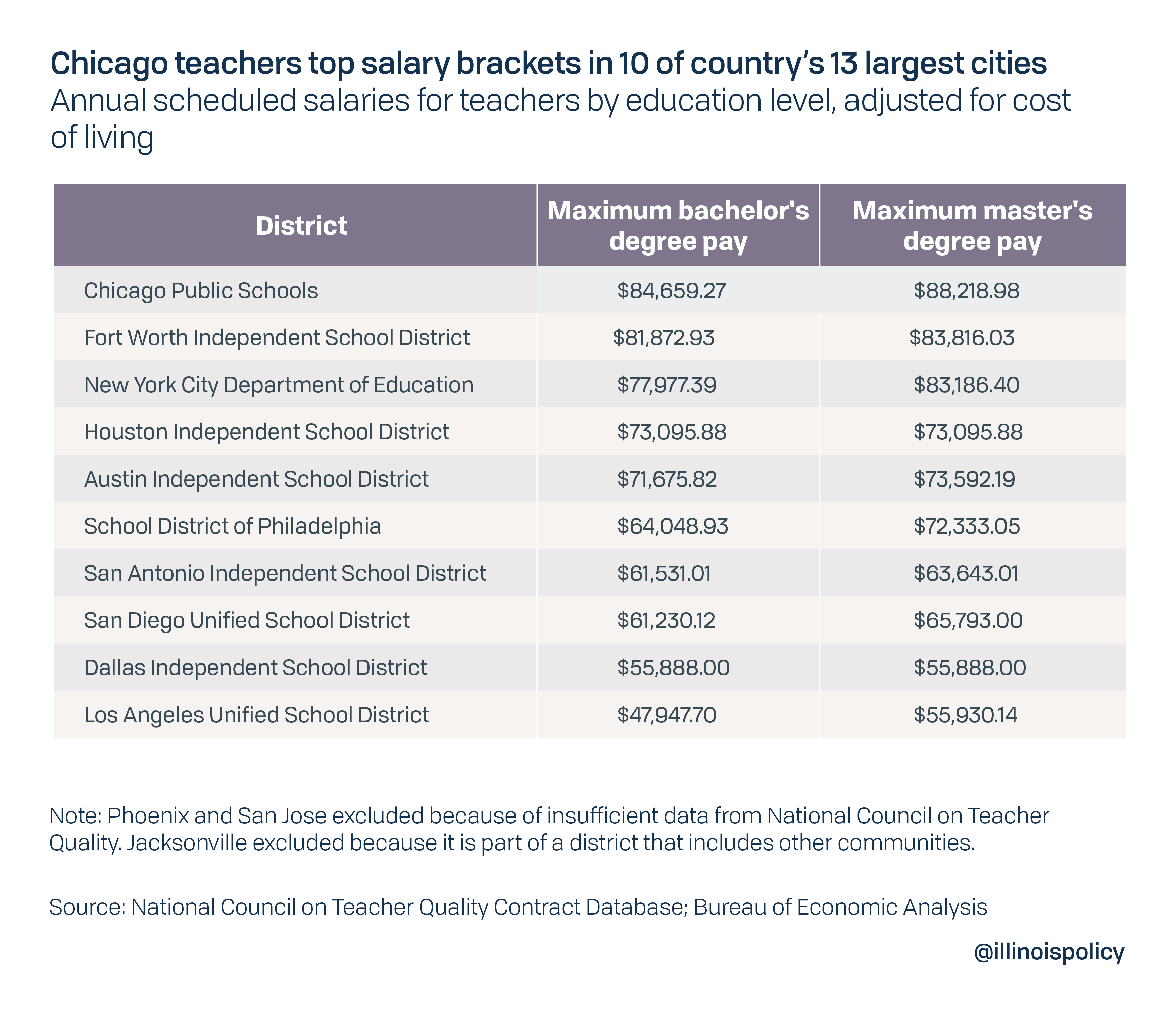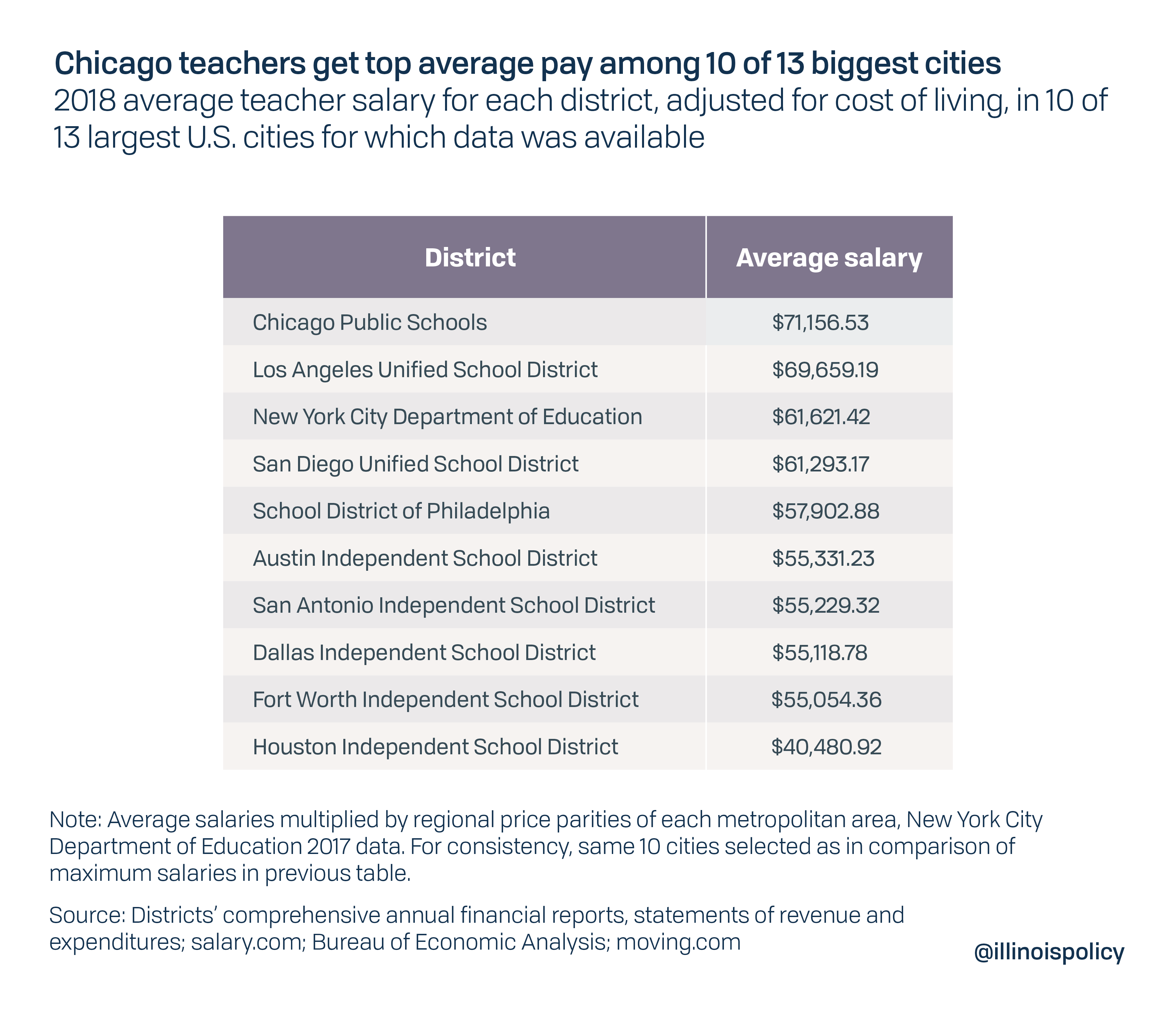CTU is out on strike: 6 things you need to know
The Chicago Teachers Union went on strike despite an offer that would boost average pay to nearly $100,000. Here’s who is getting hurt and the true costs of the strike.
The Chicago Teachers Union walked out on strike Oct. 17, pushing more than 361,000 Chicago Public Schools students – most of whom are low income – out of their classrooms for an indefinite period.
Dr. Janice Jackson, CEO of Chicago Public Schools, said CPS “bent over backwards” to meet CTU’s concerns. The American Federation of Teachers, the parent union of CTU, claimed the striking teachers are “on a righteous path, fighting for what is right.”
But there’s more to this strike than rhetoric or sound bites. Here are six things about CPS and the CTU strike you should know.
- The real victims of a strike are the students.
With CTU on strike, more than 361,000 students – more than 76 percent of whom are low income – will not be in school for an indefinite period.
Walking out on them leaves them with no place to go, and leaves parents in the lurch.
But it isn’t just inconvenient for parents and students – it can academically hurt youngsters.
For example, one study found that long strikes of 10 or more days have a significant negative effect on math test scores. Another found that extended work disruptions have negative effects on math and English achievement.
Chicago Public Schools continues to underperform the state academic achievement benchmarks year after year. Average SAT scores in CPS schools are 56 points lower than the state average, four-year graduation rates are 11 percentage points lower and the percentage of CPS teachers rated proficient or excellent comes in at 11 percentage points lower than the state average. And currently, 1 in 4 CPS students don’t graduate high school.
What’s more, almost a quarter of CPS students are chronically absent – with almost a third of students chronically truant. Going on strike certainly won’t help.
- CTU rejected a generous offer of 16% pay raises and a mere 1% increase in health insurance premiums over 5 years.
In July, a neutral fact finder – chosen by both CTU and Chicago Public Schools – evaluated the school district’s proposals as well as the union’s, taking into consideration the district’s financial ability to fund the proposals as well as the present and future general economic conditions of the city and state, per Illinois law.
Lightfoot said her administration would match the fact finder’s recommendations – including 16% pay raises and a 1% increase in health insurance premiums over a five-year period.
CTU rejected the deal.
- CPS is not in a position to meet CTU’s demands.
CTU contends CPS is capable of paying for the cost of its demands because of some increases in funding, such as state revenue sharing. CPS, however, has already included state revenue sharing in its budget projections, leaving no room for higher costs. It further explains that despite some increases in funding, it remains in an overall negative cash position and must borrow on a short-term basis to meet day-to-day obligations. It does not have a surplus of revenue to pay for CTU’s salary demands.
Indeed, CPS’ history of mismanagement and poor financial decisions has led to excessive borrowing and a “junk” credit rating. Its debt has quadrupled since 1998, with current debt at over $8 billion.
The district is also forced to allocate hundreds of millions of dollars each year to the Chicago Teachers Pension Fund after multiple years of making inadequate contributions.
Union demands would cost more than $1.1 billion over three years for salary increases and extra staff and community schools, compared to $216 million for Mayor Lori Lightfoot’s proposal. CPS is simply not in a position to meet these demands
- Chicago taxpayers are not in a position to meet CTU’s demands.
Since 2010, property taxes on the typical Chicago home have grown 188% faster than the rate of home price appreciation. In fact, the typical homeowner did not see the economy grow fast enough to keep up with the pace of the growth in property taxes. Property tax bills grew 55% faster than personal incomes from 2007-2017.
If CTU got its demands and the entire cost were paid through property taxes, a Chicago family in a median-value home would pay $235 more in the first year of the contract. Lightfoot’s offer would cost $13 in property taxes.
During former Chicago Mayor Rahm Emanuel’s term, Chicagoans suffered $864 million in annual tax increases through property taxes, water and sewer fees, and the 911 surcharge.
As taxation drastically increases, homeowners stage their own walk out: Chicago’s population dropped in each of the past four years.
CTU’s expensive demands will pressure even more people to leave.
- CTU has a long history of using strikes as a weapon – to the detriment of Chicagoans.
Between 1969 and 1987, CTU went on strike at least seven times.
More recently, CTU went on strike in 2012 demanding higher wages. In the short term, students missed seven days of instruction time and students’ families were left in a lurch.
The strike also had longer-term effects. After the strike ended, CPS had to close 50 schools and lay off thousands of teachers.
On April 1, 2016, CTU once again turned its back on students and parents by calling a one-day strike. What’s more, the union even punished teachers who chose to support their students that day.
The Illinois Educational Labor Relations Board subsequently found the strike was likely illegal. But the damage had already been done.
Then in September 2016, members of CTU voted to authorize yet another strike. The union prepared to strike, but a contract with CPS was negotiated before CTU once again decided to walk out on students.
CTU also considered walking out once again on May 1, 2017, but that strike was tabled.
Clearly, CTU uses its right to strike as a weapon to advance its own agenda at all costs. Students, taxpayers and the city’s well-being rarely enter the equation.
- CPS teachers are already well compensated.
CTU is demanding salary increases of 15% over the next three years, along with reduced health insurance premiums.
The current median Chicago teacher salary of $75,000 is more than the wages of nearly 60% of the college-educated Chicago workers who will be asked to pay for the teachers’ demands, data from the U.S. Census Bureau shows. Lightfoot’s offer over five years would increase the average to almost $100,000 with seniority bumps.
According to the Illinois State Board of Education, less than 1% of Illinois districts have a higher base salary than CPS. Its maximum salary for a teacher with a bachelor’s degree is also the fourth highest at over $96,000, not adjusted for cost of living.
CPS has the highest maximum salary for teachers with a bachelor’s degree, as well as the highest maximum salary for teachers with a master’s degree, when compared to school districts in the nation’s 10 largest cities for which data was available and adjusted for cost of living, according to the Teacher Contract Database of the National Council on Teacher Quality. They come in second, behind San Antonio Independent School District, for base salary of new teachers with bachelor’s degrees and master’s degrees.
CPS has the highest average salary among school districts in 10 of the nation’s top 13 largest cities – comparable data was not available for three of the cities – when adjusted for cost of living.


